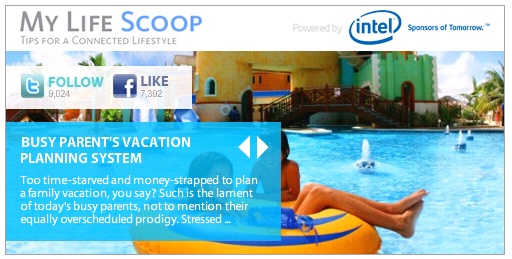The 3 types of social networkers that influence the buying process
 It’s been a rumour in the industry for quite a long time now: Facebook and Twitter are becoming indirect shopping platforms and their buttons can boost sales. A recent survey by the research firm Gartner Inc. discovered that most of the users appreciate and take suggestions from their friends through social networking sites before purchasing products. And furthermore, they rely on three types of social networking friends for their purchasing decision process.
It’s been a rumour in the industry for quite a long time now: Facebook and Twitter are becoming indirect shopping platforms and their buttons can boost sales. A recent survey by the research firm Gartner Inc. discovered that most of the users appreciate and take suggestions from their friends through social networking sites before purchasing products. And furthermore, they rely on three types of social networking friends for their purchasing decision process.
The Gartner study asked nearly 4,000 consumers across 10 key markets. The interesting part is that people in the social networks are taking different positions inside the purchasing process when recommending products to people they are connected with. Gartner identifies three types of people and roups them into three categories: ‘Connectors’, ‘Mavens’ and ‘Salesmen’.
So, how do they differentiate from each other?
The ‘Connectors’ are defined as those who “perform a bridging function between disparate groups of people and enjoy introducing people to each other”. The ‘Mavens’ are “knowledge exchangers or information brokers”, who are experts in particular area and people go to them for advice. But they are not people who wish to convince people to buy certain items; they are more interested in acquiring new knowledge, it said. The ‘Salesmen’ are those, who have “extensive social connections” and the personality trait that persuade people around them to “act on information in highly directed ways”.
“Our survey results showed that one-fifth of the consumer population is composed of Salesmen, Connectors and Mavens. These are three roles that are key influencers in the purchasing activities of 74 per cent of the population.” (…) “Salesmen and Connectors are the most effective social network influencers and the most important groups for targeted marketing based on social network analysis.” Nick Ingelbrecht, Research Director, Gartner
Gartner advises companies based on the findings of its survey to pro-actively engage with these different types of people on social networking sites. Not surprisingly, they define these categories of social media influencers as the “critical, but underutilised, aspect of the marketing process” for the future.
“Companies attempting to use social networks should develop relationships with key customers over a period of time and progressively refine the social network profiles of those individuals.” (…) “Retailers who run small shops have instinctively done this with their best customers for years with the intention that these ‘VIP’ customers will not only buy the new products but recommend them to their friends.” Nick Ingelbrecht, Research Director, Gartner
Spot On!
For me, there is a strange thing about this study. It causes a Deja-vu, I have never had before in my life. Two years ago, I published and explained -in German- in a long post the importance of these three types of people in business networks for business decision makers, and how businesses should focus on them when talking about their social media approaches. And guess what: Two years ago, I came to the same conclusion and refered to the same types of people. In these days, I have read the book “Tipping Point” by Malcolm Gladwell for the second time. And in this book you will find the same categories of people, and you are told to rely on them and work with ‘Connectors’, ‘Mavens’ and ‘Salesmen’.
The main question is now, how to address these social networking influencers? Can you call them up and talk to them directly? Send an email? Invite them for dinner or lunch? What is the best way to start the conversation with them?









